Home>Garden Essentials>How Is Turf Grass Made


Garden Essentials
How Is Turf Grass Made
Modified: October 28, 2024
Discover how turf grass is made for your garden and transform your outdoor space with lush and vibrant greenery. Learn the process and benefits of using turf grass.
(Many of the links in this article redirect to a specific reviewed product. Your purchase of these products through affiliate links helps to generate commission for Storables.com, at no extra cost. Learn more)
Introduction
Gardens are a sanctuary for both nature enthusiasts and those seeking a peaceful retreat. One of the key elements in creating a beautiful garden is the lush green grass that covers the ground. It not only adds aesthetic appeal but also provides a comfortable space for recreational activities and relaxation.
Turf grass, also known as lawn grass, is the most common type of grass used in gardens and landscapes. It plays a vital role in enhancing the overall appearance and functionality of outdoor spaces. But have you ever wondered how turf grass is made? In this article, we will delve into the fascinating world of turf grass production and discover the intricacies of its creation.
Key Takeaways:
- Making turf grass involves selecting the right seeds, preparing the soil, and carefully installing the grass sod. It’s a detailed process that requires patience and precision to create a lush and vibrant lawn.
- Turf grass offers benefits like visual appeal and recreational space, but it also requires regular maintenance and can have environmental impacts. Sustainable practices can help minimize these effects and promote a balance between a beautiful lawn and environmental stewardship.
Read more: What Is Astro Turf Made Of
What is Turf Grass?
Turf grass refers to the type of grass that is specifically cultivated for use in lawns, sports fields, golf courses, and other recreational areas. It is characterized by its dense and uniform growth, making it ideal for creating a lush and visually appealing landscape.
Turf grass is typically a blend of different grass species that are selected based on their suitability for specific environmental conditions and usage requirements. Common grass varieties used in turf grass blends include Bermuda grass, Kentucky bluegrass, fescue, and zoysia grass.
One of the main features of turf grass is its ability to withstand regular mowing and foot traffic while maintaining its vibrant green color and overall health. This makes it a popular choice for areas that experience high usage, such as sports fields and public parks.
Turf grass not only enhances the visual appeal of outdoor spaces but also offers various functional benefits. It helps to reduce soil erosion, filter pollutants from the air, and absorb noise. Additionally, turf grass provides a soft surface for activities like walking, playing, and picnicking.
When properly maintained, turf grass creates a lush and inviting environment that makes spending time outdoors a pleasurable experience for both homeowners and visitors.
Natural Turf Grass vs. Artificial Turf Grass
When it comes to selecting the type of grass for your garden or landscape, you may be faced with the decision between natural turf grass and artificial turf grass. Both options have their own set of advantages and considerations, so it’s important to understand the differences between them.
Natural Turf Grass
Natural turf grass refers to the traditional method of growing grass from seeds or sod. It offers a more organic and authentic look, blending seamlessly with the natural environment. Natural turf grass has several key benefits:
- Environmental benefits: Natural turf grass helps to promote biodiversity, providing a habitat for insects, birds, and other wildlife. It also helps to improve air quality by absorbing carbon dioxide and releasing oxygen.
- Cooling effect: Natural turf grass has a cooling effect on the surrounding area, making it more comfortable during hot summer months.
- Soil health: Natural turf grass promotes healthy soil by improving its structure and enhancing its ability to retain moisture.
- Sensory experience: Walking or lying on natural turf grass provides a sensory experience, with its soft texture and natural scent.
However, natural turf grass also has some drawbacks:
- Maintenance: Natural turf grass requires regular maintenance, including mowing, watering, fertilizing, and pest control.
- Limited durability: Natural turf grass is more susceptible to wear and tear, and may require reseeding or resodding in high-traffic areas.
- Weather-dependent: Natural turf grass may be affected by weather conditions such as drought, excessive rain, or extreme temperatures.
Artificial Turf Grass
Artificial turf grass, also known as synthetic grass or fake grass, is a man-made alternative to natural turf grass. It is made from synthetic materials such as polyethylene, polypropylene, or nylon. Artificial turf grass has gained popularity for various reasons:
- Low maintenance: Artificial turf grass requires minimal maintenance, eliminating the need for mowing, watering, and fertilizing.
- Durability: Artificial turf grass is designed to withstand heavy foot traffic and is more resistant to damage compared to natural turf grass.
- All-weather usability: Artificial turf grass can be used in any weather condition, as it does not get muddy or slippery.
- Conservation of resources: Artificial turf grass does not require watering, reducing water consumption and preserving this valuable resource.
However, there are some considerations when it comes to artificial turf grass:
- Artificial appearance: While modern technology has improved the realism of artificial turf grass, it may still lack the natural look and feel of real grass.
- Heat retention: Artificial turf grass can become hot during sunny days, making it less comfortable for barefoot activities.
- Environmental impact: Artificial turf grass is not biodegradable and can contribute to landfill waste once it reaches the end of its lifespan.
Ultimately, the decision between natural turf grass and artificial turf grass depends on your specific needs, preferences, and environmental considerations. It’s important to evaluate the advantages and disadvantages of each option before making your choice.
The Process of Making Turf Grass
The creation of turf grass involves a carefully orchestrated process that starts with seed selection and ends with the installation of the grass sod. Let’s explore the step-by-step journey of how turf grass is made.
1. Seed Selection and Germination: The first step in making turf grass is selecting the appropriate seed variety based on factors such as climate, soil conditions, and usage requirements. The chosen seeds are then sown onto prepared seedbeds, where they germinate and develop into young grass plants.
2. Soil Preparation and Conditioning: Before the seedlings are transplanted, the soil in the intended turf grass area needs to be adequately prepared. This involves removing any existing vegetation, tilling the soil, and addressing any soil quality issues. Conditioning the soil with organic matter and nutrients helps create an optimal growing environment for the grass.
3. Sod Harvesting and Installation: Once the grass seedlings have reached a certain level of maturity, they are ready for harvesting. This is typically done by using specialized equipment to cut thin strips of turf from the established fields. The harvested turf, known as sod, is then carefully transported to the installation site and laid out in a staggered pattern, ensuring proper coverage and alignment.
4. Watering and Establishment: After the installation, the newly laid sod requires adequate water to establish proper root growth. Regular watering helps the roots penetrate the soil, promoting a strong and healthy turf. This stage may take several weeks, during which the sod needs to be protected from excessive foot traffic or stress.
5. Fertilization and Maintenance: Once the turf grass has established itself, regular fertilization is necessary to provide essential nutrients for growth and maintaining vibrant green color. Additionally, proper lawn maintenance practices such as mowing, weed control, and aeration help ensure the longevity and overall health of the turf grass.
Throughout the entire process, attention to detail and precision are essential to produce high-quality turf grass. It requires knowledgeable professionals who understand the specific needs of each grass variety and can implement best practices for cultivation and installation.
The process of making turf grass requires time and patience, but the end result is a lush and vibrant lawn that enhances the beauty of the surrounding landscape. Whether it’s for residential, commercial, or recreational purposes, turf grass provides a durable and visually appealing surface for various outdoor activities.
Seed Selection and Germination
Seed selection is a critical step in the process of making turf grass. Choosing the right seed variety ensures that the grass will thrive in the specific environmental conditions and usage requirements of the intended area. Here’s a closer look at seed selection and the germination process involved in producing healthy turf grass.
Seed Selection: When selecting turf grass seeds, various factors are taken into consideration:
- Climate: Different grass species thrive in specific climate conditions, so it’s important to choose seeds that are suitable for the local climate. Factors like heat tolerance, cold hardiness, and drought resistance play a role in selecting the appropriate grass type.
- Sunlight and Shade: Certain grass varieties are more shade-tolerant, making them better suited for areas with limited sunlight. Considering the amount of shade the area receives helps determine the right grass species.
- Usage Requirements: The intended use of the turf grass, whether it’s for a residential lawn, sports field, or commercial area, influences the choice of seed. Some grass species are more durable and able to withstand heavy foot traffic, while others are more decorative in nature.
- Soil Conditions: Soil type and fertility impact the growth and health of the grass. Specific grass varieties are better suited for different soil conditions, such as sandy, clay, or loamy soil.
Germination: Once the appropriate turf grass seeds have been selected, the process of germination begins:
- Seedbed Preparation: A well-prepared seedbed is crucial for successful germination. This involves removing any existing vegetation, loosening the soil, and addressing any soil quality issues. Proper soil preparation provides an optimal environment for seed germination.
- Sowing: The selected grass seeds are evenly spread over the prepared seedbed at the recommended seeding rate. Specialized equipment, such as seed spreaders, can be used to ensure even distribution.
- Moisture: Adequate moisture is essential for the germination process. The seeds should be watered immediately after sowing and kept consistently moist throughout the germination period. This encourages the seeds to absorb water, swell, and begin the process of sprouting.
- Temperature: Different grass species have specific temperature requirements for optimal germination. Maintaining the appropriate soil temperature during the germination period helps to facilitate seed growth.
- Time and Patience: Germination is a gradual process that can take anywhere from a few days to a few weeks, depending on the grass species and environmental conditions. Regular monitoring and patience are crucial during this stage.
Proper seed selection and germination set the foundation for healthy and robust turf grass. The careful consideration of factors like climate, usage requirements, and soil conditions, coupled with the nurturing of germinating seeds, ensures the successful establishment of a vibrant and resilient lawn.
Read more: How To Clean Turf Grass
Soil Preparation and Conditioning
Proper soil preparation and conditioning are essential steps in the process of making turf grass. Creating an optimal growing environment for the grass ensures healthy root development, nutrient availability, and overall turf health. Let’s explore the importance of soil preparation and conditioning in producing high-quality turf grass.
Soil Testing: Before beginning soil preparation, conducting a soil test is highly recommended. This helps determine the soil’s pH level, nutrient content, and overall fertility. Soil test results provide valuable insights that guide the appropriate soil amendments and adjustments necessary for optimal grass growth.
Removal of Existing Vegetation: Clearing the area of existing vegetation is the first step in soil preparation. This includes removing weeds, grass, rocks, and debris. This process ensures a clean slate for the turf grass to establish strong roots and prevents competition for nutrients and space.
Tilling and Leveling: Tilling the soil helps break up compacted soil, improve drainage, and create a loose seedbed for optimal root penetration. It also helps incorporate organic matter, amendments, and nutrients into the soil. After tilling, the soil should be leveled using rakes or a roller to create a smooth and even surface.
Soil Amendments: Depending on the results of the soil test, amendments may be necessary to optimize the soil’s composition and fertility. Common soil amendments include adding organic matter such as compost, peat moss, or well-rotted manure to improve soil structure, water retention, and nutrient availability. Other amendments may include lime to adjust pH levels or specific nutrients like nitrogen, phosphorus, and potassium.
Fertilization: Applying a balanced fertilizer helps establish a strong foundation for the turf grass. The fertilizer should be chosen based on the soil’s nutrient deficiencies and the specific needs of the grass species being grown. Slow-release fertilizers are often preferred, as they provide a gradual and consistent supply of nutrients over time.
Soil Moisture: Proper soil moisture is crucial for turf grass establishment and growth. The soil should be moist but not waterlogged, allowing for optimal seed germination and root development. Depending on weather conditions, regular watering may be necessary during the establishment phase to ensure the grass roots penetrate and establish in the soil.
Soil Drainage: Good soil drainage is important to prevent waterlogging and the development of standing water. If the soil has poor drainage, it may be necessary to incorporate drainage systems or amend the soil with materials like sand or organic matter to improve its permeability.
Compaction Prevention: Soil compaction can hinder root growth and drainage. To prevent compaction, avoid heavy machinery or excessive foot traffic on the soil during the establishment phase. Finesse and care should be exercised to maintain the soil’s loose structure.
By properly preparing and conditioning the soil, you create an ideal environment for turf grass to thrive. Implementing steps such as soil testing, removing existing vegetation, tilling, incorporating amendments, and ensuring proper moisture and compaction prevention sets the stage for healthy root growth and lush, vibrant turf grass.
When making turf grass, it’s important to choose the right type of grass for your climate and soil. Make sure to properly prepare the soil, plant the grass seeds or lay the sod, and water and maintain it regularly for healthy growth.
Sod Harvesting and Installation
Once the turf grass has reached an appropriate stage of growth, it is ready for harvesting and installation. This process involves carefully cutting and transplanting mature grass plants to create a uniform and visually appealing lawn. Let’s delve into the details of sod harvesting and installation for the creation of a lush and healthy turf.
Sod Harvesting: Sod harvesting is the process of cutting thin strips of mature turf grass from established fields. Here are the key steps involved:
- Timing: Sod harvesting is typically done when the grass plants have reached a certain height and density. This ensures that the roots are well-established and can support the transplanting process.
- Specialized Equipment: Sod harvesters or turf cutters, which are specially designed machines, are used to cut the grass in a consistent and precise manner. These machines slice beneath the surface of the soil to cleanly remove a layer of grass and soil, known as the sod.
- Size and Thickness: The sod is typically cut into rectangular strips that are standardized in size for ease of installation. The thickness of the sod may vary depending on the specific grass species and project requirements.
- Careful Handling: After harvesting, the freshly cut sod is handled with care to preserve its integrity and prevent damage to the grass blades and roots. It is loaded onto pallets or rolls for transportation to the installation site.
Sod Installation: Installing sod involves laying out the harvested grass strips onto the prepared soil surface in a systematic and precise manner. Here’s a step-by-step guide:
- Site Preparation: Before sod installation, the soil should be properly prepared and conditioned, as mentioned in the previous sections. It should be leveled, free of debris, and adequately moistened to facilitate easy installation.
- Moistening the Sod: Prior to installation, it is crucial to water the harvested sod to prevent it from drying out. This ensures that the grass roots remain hydrated and healthy during the transition from the field to the new site.
- Laying the Sod: The sod strips are carefully unrolled or placed onto the prepared soil in a staggered pattern, similar to laying bricks. Each strip should be pressed firmly against the previous one to eliminate gaps and ensure uniform coverage.
- Staggering and Trimming: Staggering the sod seams helps create a seamless and cohesive appearance. Any excess or overlapping edges can be trimmed using a sharp knife for a neat and clean finish.
- Watering and Consolidation: Once the sod is installed, it should be watered generously to facilitate root establishment and ensure sufficient moisture throughout the grass layer. Lightly rolling or pressing down the sod with a roller or wooden board helps ensure good soil contact and consolidation.
Proper sod harvesting and installation techniques are crucial for the successful establishment of turf grass. Attention to detail during the cutting and handling process, as well as precision and care during sod installation, contribute to a uniform and healthy lawn that enhances the beauty and functionality of outdoor spaces.
Maintenance and Care of Turf Grass
Proper maintenance and care are vital for keeping turf grass healthy, vibrant, and resilient. Regular maintenance practices ensure that the grass stays lush, free from weeds, and able to withstand the demands of foot traffic and environmental stressors. Here are some essential tips for maintaining and caring for your turf grass:
Mowing: Regular mowing helps maintain the appropriate height and density of the turf grass. Here are some guidelines for effective mowing:
- Correct Height: Set the mower blade to the recommended height for the specific grass species. Cutting too low can stress the grass and make it more susceptible to weeds and disease, while cutting too high may result in a less uniform appearance.
- Frequency: Mow the grass regularly, ensuring that you do not remove more than one-third of the grass blade’s length at each mowing session. This promotes healthy growth and helps maintain the desired height.
- Sharpened Blades: Use sharp mower blades to ensure clean cuts and prevent damage to the grass. Dull blades can tear the grass, leading to a ragged and unhealthy appearance.
Watering: Proper watering is crucial for the health and vitality of turf grass. Here are some tips for effective watering:
- Deep Watering: Water the grass deeply and infrequently to encourage deep root growth. This helps the grass become more drought-tolerant and less dependent on frequent watering.
- Time of Day: Watering in the early morning or late afternoon is best, as it allows the grass to dry before evening. Avoid watering during the hottest parts of the day to minimize evaporation.
- Evapotranspiration: Adjust the watering schedule based on weather conditions and the grass’s water requirements. Consider factors such as rainfall, temperature, and humidity levels to avoid over or under watering.
Fertilization: Regular fertilization provides essential nutrients for the healthy growth of turf grass. Here are some guidelines for fertilizing:
- Soil Testing: Conduct regular soil tests to determine nutrient deficiencies and adjust fertilizer application based on the test results.
- Seasonal Timing: Apply fertilizers at the appropriate times based on the grass’s growth cycle and regional climate. Spring and fall are typically recommended for most grass species.
- Slow-release Fertilizers: Consider using slow-release or controlled-release fertilizers for gradual nutrient release and sustained feeding of the grass over an extended period.
- Proper Application: Follow the manufacturer’s instructions regarding the amount of fertilizer to apply to avoid over or under fertilizing. Avoid applying fertilizer directly onto the grass blades, as it may cause burning.
Weed Control: Preventing and managing weeds is crucial for maintaining a healthy turf. Here are some tips for effective weed control:
- Regular Inspections: Regularly inspect the lawn for weeds and take prompt action to control them as soon as they appear.
- Hand-pulling: Remove small weeds by hand, making sure to remove the entire root system to prevent regrowth.
- Herbicides: Use herbicides selectively and according to label instructions to target specific weed species. Be cautious of potential harm to the turf grass and other plants.
- Proper Lawn Maintenance: Maintaining healthy turf through proper mowing, watering, and fertilization practices helps create conditions that discourage weed growth.
Aeration and Overseeding: Periodic aeration and overseeding help maintain turf grass health and density. Aeration relieves soil compaction and improves root development, while overseeding introduces new grass seeds to fill in bare spots and ensure a thick and uniform lawn.
Pest and Disease Control: Regular monitoring and prompt action against pests and diseases are vital for protecting turf grass. Proper identification and treatment methods should be employed to address any issues promptly and effectively.
By implementing these maintenance practices and staying proactive with turf grass care, you can enjoy a beautiful, healthy, and resilient lawn that enhances the aesthetic value and functionality of your outdoor space.
Advantages and Disadvantages of Turf Grass
Turf grass offers numerous advantages in creating beautiful and functional outdoor spaces. It provides a lush and vibrant green carpet that enhances the aesthetics and usability of the area. However, like any other landscaping option, turf grass also has its share of disadvantages. Let’s explore the advantages and disadvantages of turf grass to help you make an informed decision for your garden or landscape.
Advantages of Turf Grass:
- Visual Appeal: Turf grass creates an inviting and visually pleasing environment. It enhances the beauty of outdoor spaces, providing a natural and organic feel.
- Recreational Space: Turf grass provides a soft and comfortable surface for various outdoor activities, such as picnics, sports, and children’s play areas.
- Erosion Control: Turf grass helps prevent soil erosion by holding the soil in place with its extensive root system, protecting vulnerable areas from the effects of wind and water.
- Air Quality Improvement: Grass plants absorb carbon dioxide and release oxygen, contributing to cleaner and healthier air quality.
- Temperature Regulation: Turf grass has a cooling effect on the surrounding area, reducing heat intensity during hot summer months and making the environment more comfortable.
- Noise Absorption: Turf grass acts as a natural noise absorber, reducing sound reflection and creating a more peaceful and tranquil atmosphere.
- Walkability: Walking on turf grass provides a soft and cushioned surface, making it pleasant for barefoot activities and increasing overall comfort.
Disadvantages of Turf Grass:
- Maintenance: Turf grass requires regular maintenance, including mowing, watering, fertilizing, and weed and pest control. This maintenance can be time-consuming and may require additional resources.
- High Water Consumption: Maintaining lush and healthy turf grass often involves significant water consumption, which can contribute to water scarcity issues in areas with limited water resources.
- Chemical Dependency: Maintaining the appearance and health of turf grass may involve the use of chemical fertilizers, herbicides, and insecticides, which can have environmental implications if not used responsibly.
- Susceptibility to Damage: Turf grass can be prone to damage from pests, diseases, extreme weather conditions, and heavy foot traffic. Damage repair and restoration can be costly and time-consuming.
- Limited Biodiversity: Compared to natural landscapes, turf grass monocultures offer limited wildlife habitat and biodiversity, as they do not provide a variety of food sources and shelter for diverse species.
- Cost: The installation and maintenance costs of turf grass can be higher compared to other landscaping options, especially when factoring in water usage, fertilizers, and regular upkeep.
It’s essential to weigh the advantages and disadvantages of turf grass against your specific needs, budget, environmental considerations, and maintenance capabilities. Consider alternative landscaping options like native plants, xeriscaping, or reducing turf areas to strike a balance between aesthetics, functionality, and sustainability.
Environmental Impact of Turf Grass
While turf grass can enhance the beauty and functionality of outdoor spaces, it is important to consider its environmental impact. Understanding how turf grass cultivation, maintenance, and usage affect the environment allows us to make informed decisions and implement sustainable practices. Here are some key aspects of the environmental impact of turf grass:
1. Water Consumption: Turf grass requires regular watering to maintain its health and appearance. This can result in significant water consumption, especially in areas with limited water resources or during periods of drought. Overwatering can contribute to water scarcity and strain local water supplies. Proper water management practices, such as watering deeply and infrequently, can help conserve water and minimize the environmental impact.
2. Pesticide and Fertilizer Use: Maintaining turf grass often involves the use of pesticides, herbicides, and fertilizers to control pests, weeds, and promote growth. These chemicals can migrate to surrounding areas through runoff or leaching, potentially contaminating water sources and harming non-target organisms. Responsible and judicious use of these products, including following recommended application rates and timing, can help minimize their environmental impact.
3. Soil Erosion: Turf grass helps prevent soil erosion by holding the soil in place with its root system. However, improper soil management and excessive foot traffic can result in soil compaction and erosion. This can lead to sediment runoff into water bodies and the loss of valuable topsoil. Implementing soil conservation practices, such as regular aeration, appropriate drainage, and limiting unnecessary soil disturbance, can help mitigate these issues.
4. Biodiversity: Turf grass monocultures provide limited habitat and food sources for wildlife compared to diverse natural landscapes. The lack of plant diversity and flowering species can impact pollinators, birds, and beneficial insects. Incorporating native plants, creating pockets of wildflowers, or incorporating biodiversity-friendly landscaping practices can help support local ecosystems and promote biodiversity in turf grass areas.
5. Energy and Air Pollution: Maintaining turf grass often requires the use of fossil fuel-powered equipment such as lawn mowers, trimmers, and leaf blowers. The emissions from these machines contribute to air pollutants and carbon dioxide emissions. Minimizing the use of gas-powered equipment, opting for electric alternatives, or adopting manual tools can help reduce energy consumption and air pollution associated with turf grass maintenance.
6. Irrigation Infrastructure: Large-scale turf grass areas, such as sports fields and golf courses, require extensive irrigation systems to provide water to the grass. The development and maintenance of these irrigation systems can contribute to the depletion of water resources and the loss of natural habitats. Implementing efficient irrigation technologies, such as drip irrigation or smart irrigation systems, can help minimize water wastage and reduce the environmental impact of watering turf grass.
While turf grass offers various benefits, it is essential to adopt sustainable practices to minimize its negative environmental impacts. This includes using water responsibly, reducing chemical inputs, promoting biodiversity, managing soil erosion, and embracing energy-efficient maintenance practices. By adopting a holistic and eco-friendly approach, we can enjoy the beauty and functionality of turf grass while minimizing its ecological footprint.
Conclusion
Turf grass plays a significant role in enhancing the beauty, functionality, and recreational value of outdoor spaces. Understanding the process of making turf grass, from seed selection to installation, allows us to appreciate the craftsmanship and expertise involved in creating a lush and vibrant lawn. However, it is essential to consider the advantages, disadvantages, and environmental impact of turf grass when making landscaping decisions.
With its visual appeal, recreational space, and erosion control benefits, turf grass offers many advantages. It provides a soft and comfortable surface for various outdoor activities and contributes to improved air quality and temperature regulation. The walkability and noise absorption properties of turf grass make it a desirable option for creating inviting and peaceful environments.
Nevertheless, there are some considerations to keep in mind. The maintenance requirements of turf grass, including mowing, watering, and fertilization, can be time-consuming and require resources. High water consumption and the use of pesticides and fertilizers can have environmental implications, such as water scarcity and water pollution. Additionally, limited biodiversity, susceptibility to damage, and the associated costs are important factors to consider when choosing turf grass.
To mitigate the environmental impact and promote sustainability, various practices can be implemented. Water-efficient irrigation systems, responsible use of fertilizers and pesticides, proper soil management, and incorporating native plants can contribute to a more environmentally friendly approach to turf grass maintenance. It is crucial to balance the desire for a beautiful and functional lawn with the need to protect the environment and promote biodiversity.
Ultimately, the decision to use turf grass in your garden or landscape should consider your specific needs, budget, available resources, and environmental considerations. Alternatives such as native plants, xeriscaping, or reducing turf areas can be explored to create a more sustainable and diverse outdoor space.
By understanding the intricacies of turf grass production, being mindful of the advantages and disadvantages, and implementing sustainable practices, we can strike a balance between a visually appealing and functional outdoor space and a commitment to environmental stewardship.
Frequently Asked Questions about How Is Turf Grass Made
Was this page helpful?
At Storables.com, we guarantee accurate and reliable information. Our content, validated by Expert Board Contributors, is crafted following stringent Editorial Policies. We're committed to providing you with well-researched, expert-backed insights for all your informational needs.


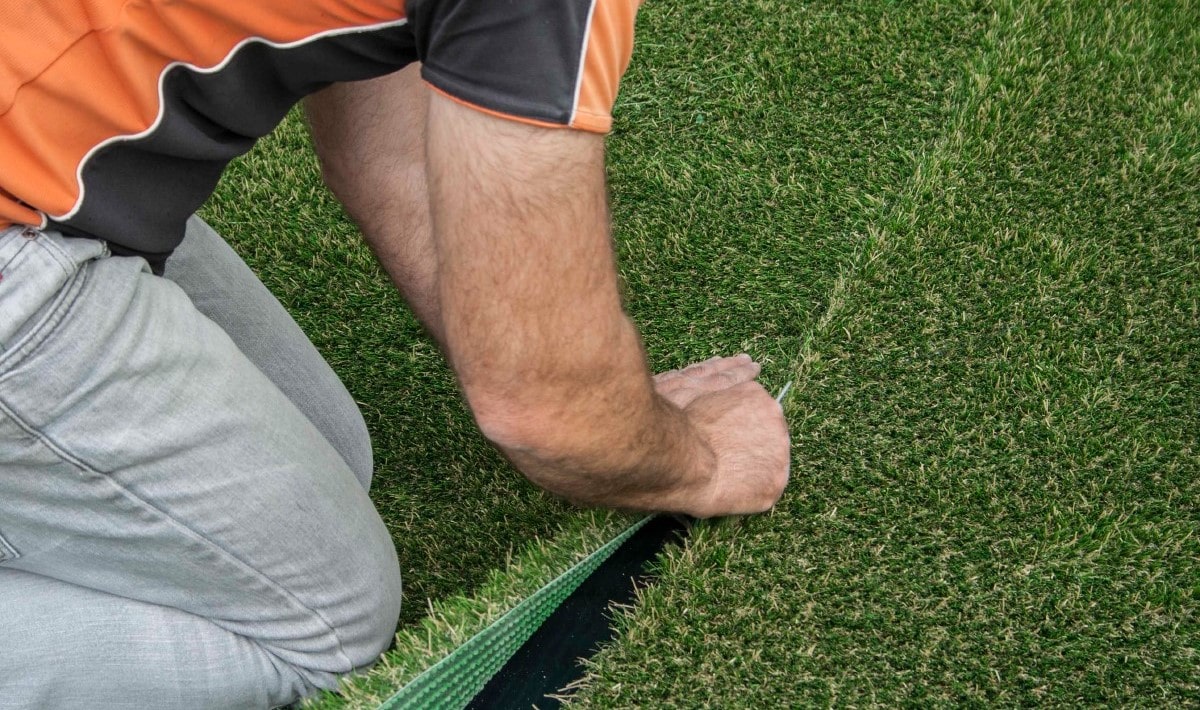




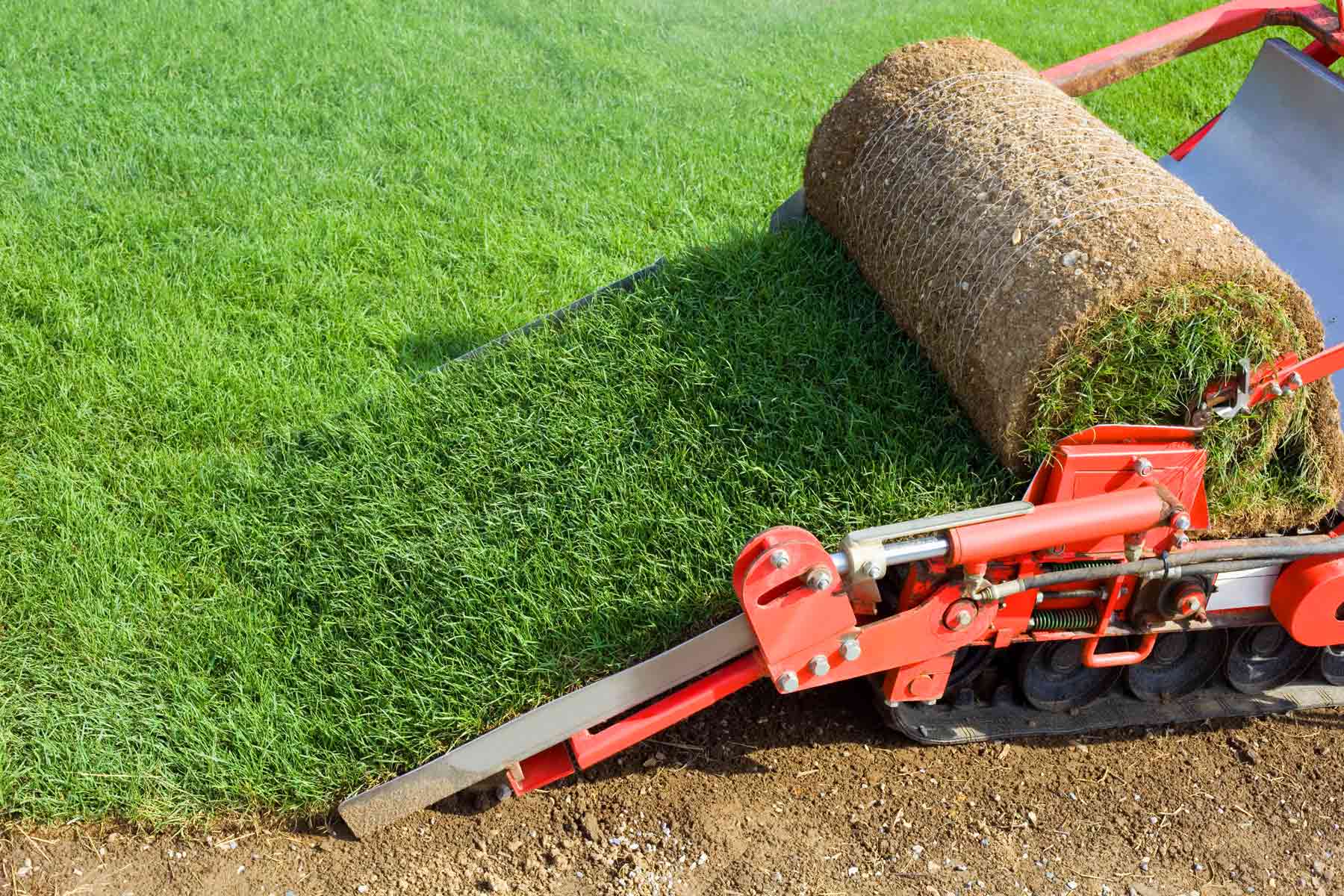
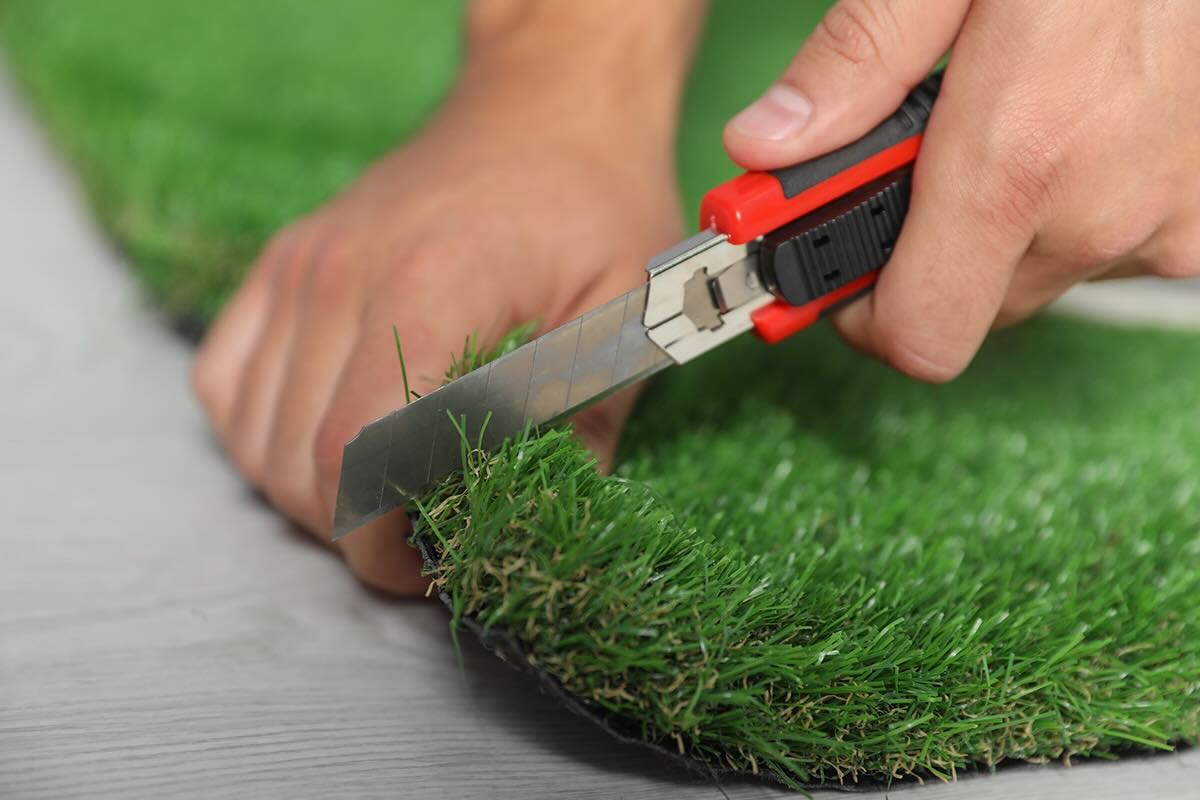
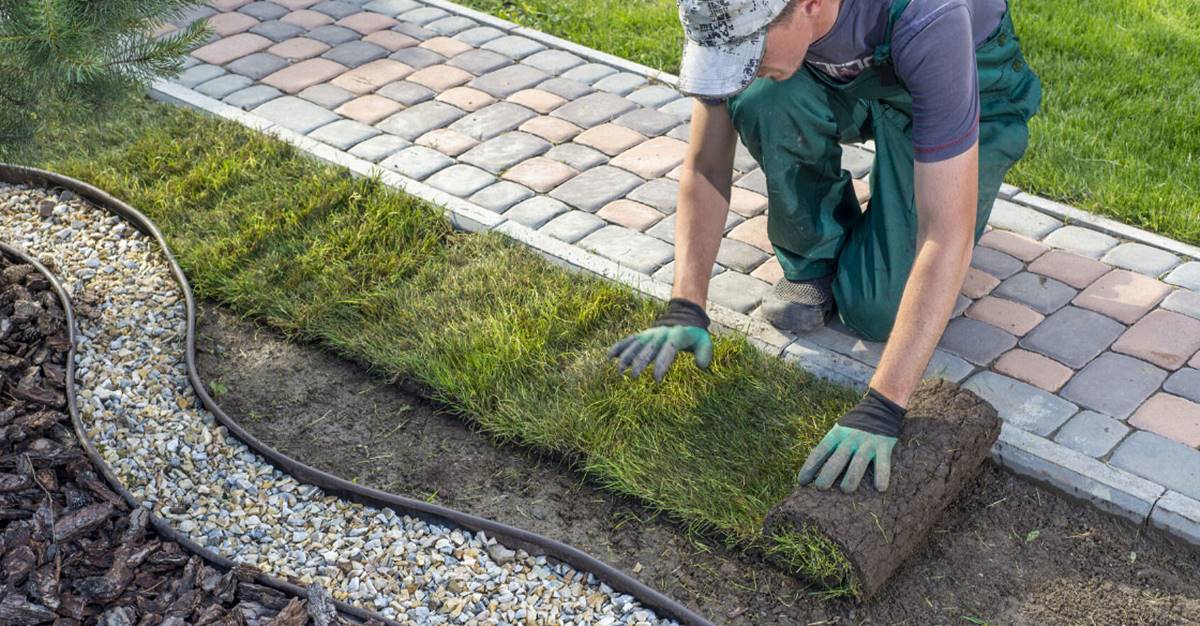


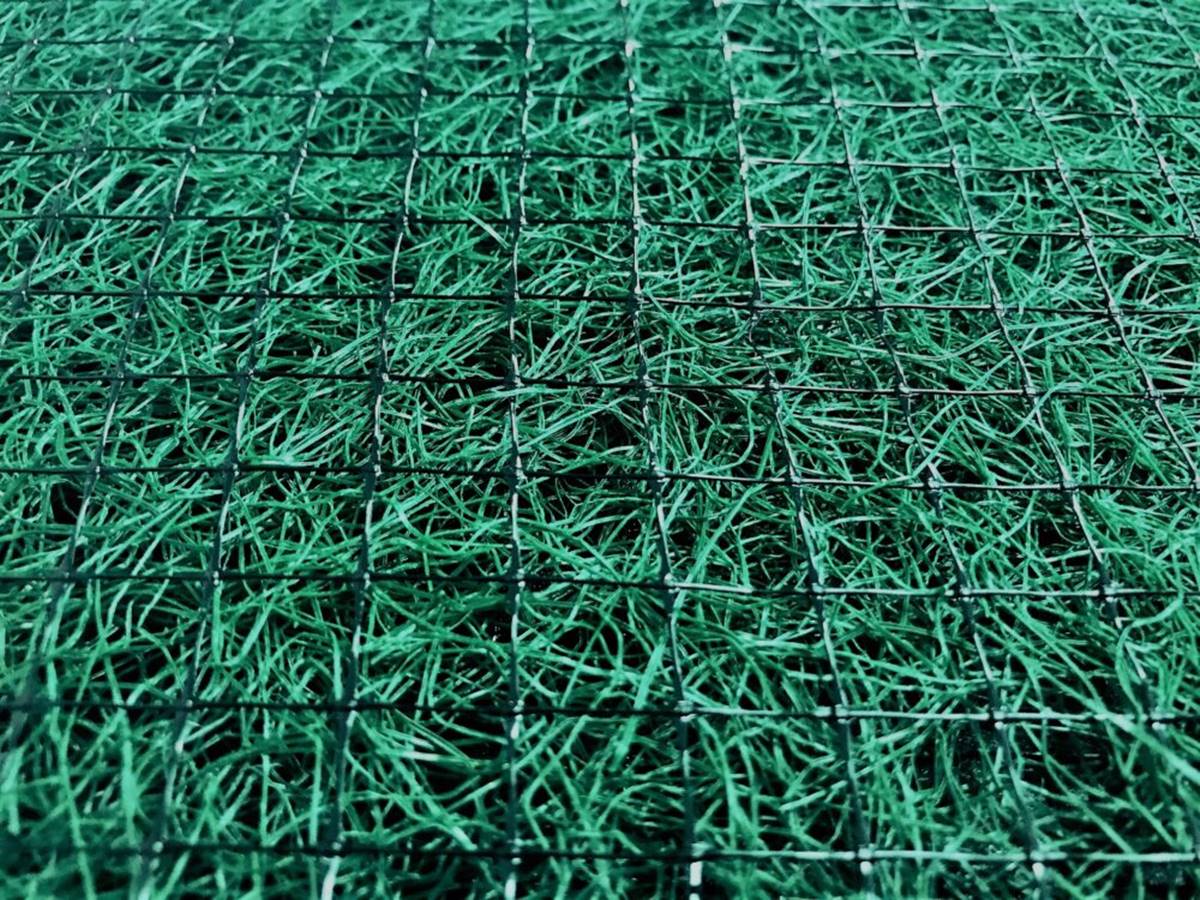

0 thoughts on “How Is Turf Grass Made”